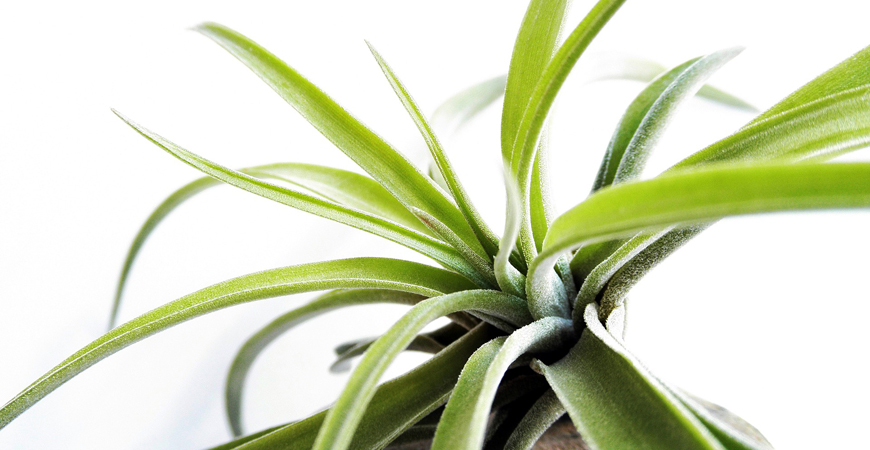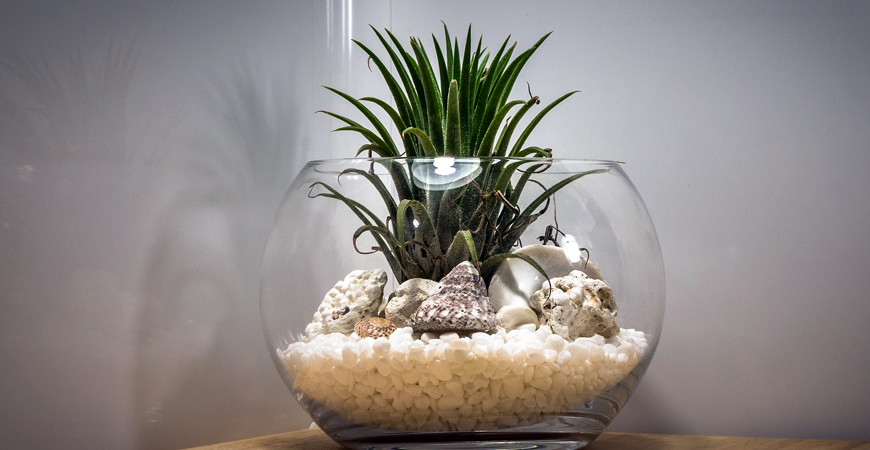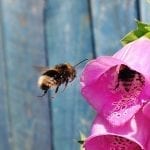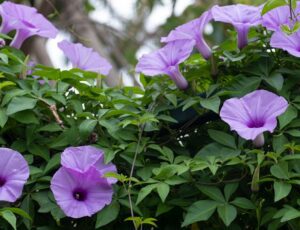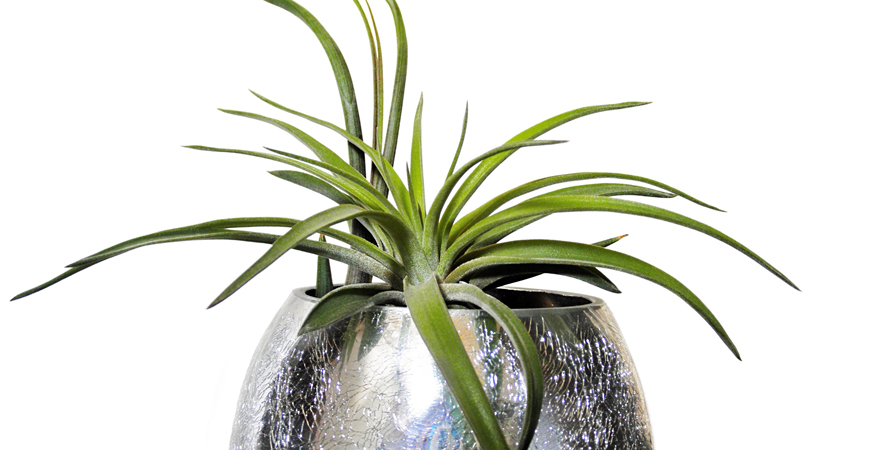
Air Plant Care Made Easy
Air plants are evergreen perennials that make fascinating indoor plants. They are a unique plant, as they ‘feed’ through their leaves and not through roots. See our air plant care tips and how-tos below.
What air plant varieties are available?
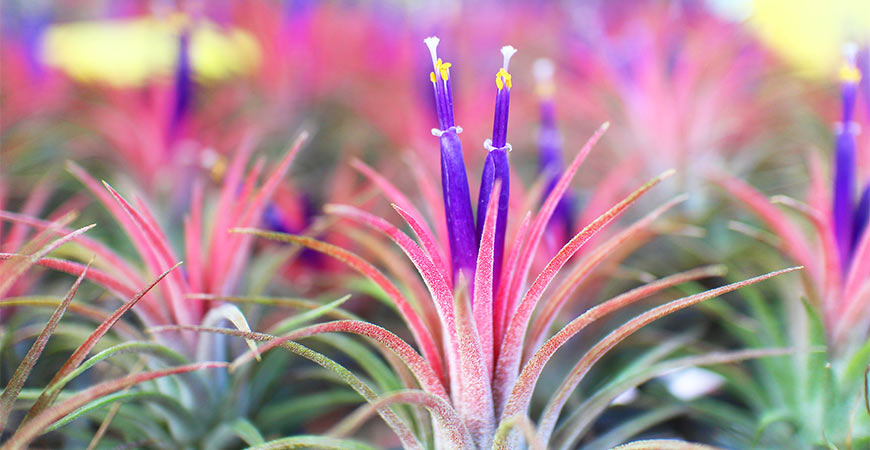
Blushing bride (tillandsia ionantha)
This variety blooms in showy purple-blue flowers. The leaves are usually grey, grey-green, or white. Blushing bride grows to 3 to 4 inches in height and width.
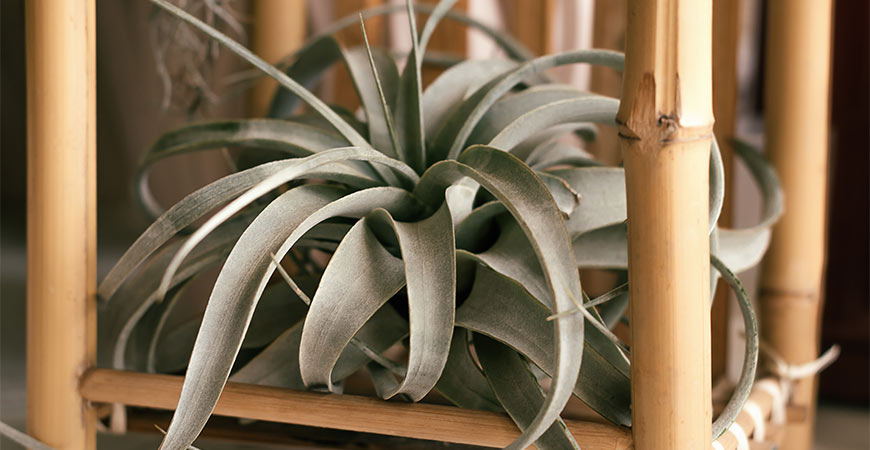
Xerographic air plant (tillandsia xerographica)
This popular bromeliad blooms in bright, multi-colored flowers of red, chartreuse, and purple. The leaves are usually grey, grey-green, or white. This species is large when mature, growing to approximately 3 feet in height and width.
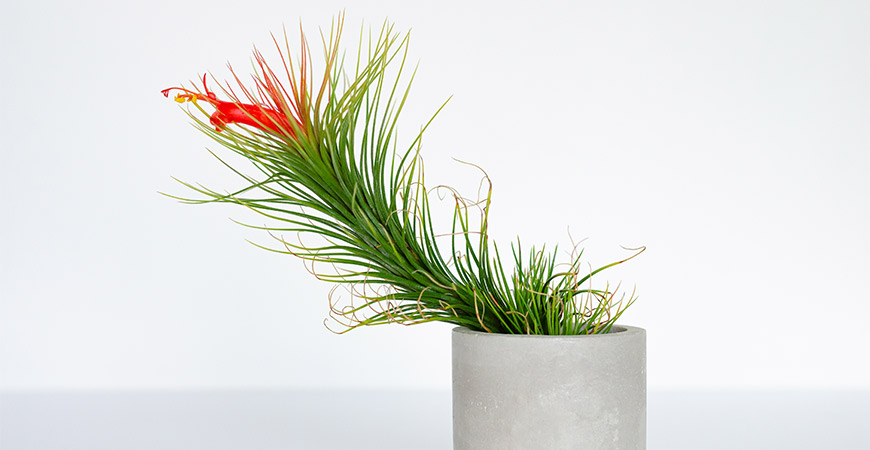
Air plant (tillandsia funckiana)
This popular variety blooms in bright, red-orange flowers. Also, the foliage is medium to bright green with whitish hairs. This air plant variety grows to approximately 6 to 12 inches in height and 12 inches in width. Furthermore, it will flower from spring to fall.
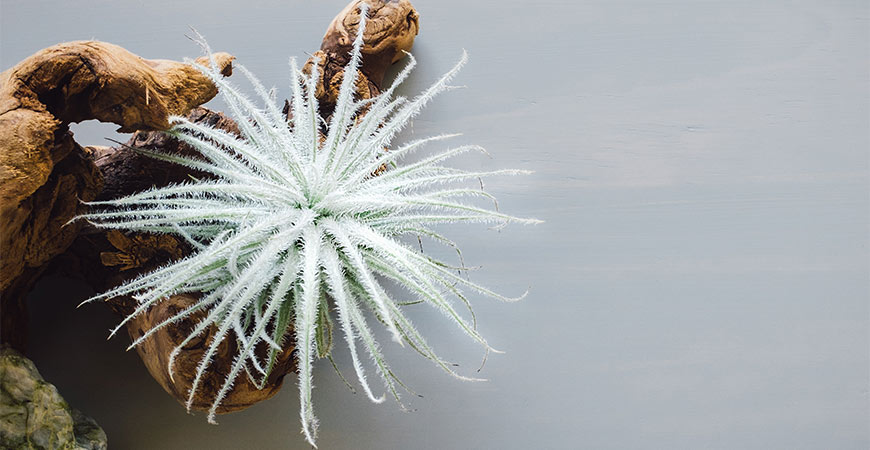
Air plant (tillandsia tectorum)
This air plant variety has narrow, thin leaves with whitish hairs (trichomes) and is drought-tolerant. Water the leaves sparingly. For a healthy plant, mist the leaves of the tillandsia tectorum every 1 to 3 weeks.
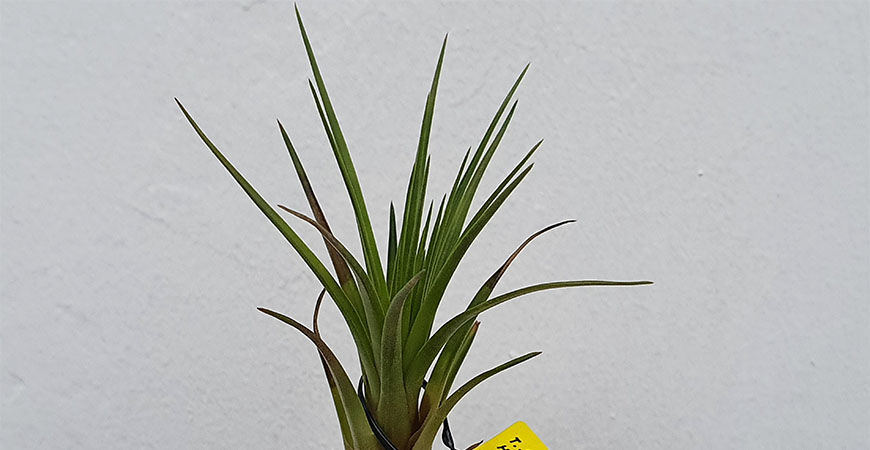
Air plant (tillandsia juncea)
This variety has long, grass-like foliage and looks great when used as a tall accent. This fascinating plant is native to South and Central America, Mexico, and the West Indies. Flowers emerge from the center of the plant in shades of deep purple to pale lavender.
What air plant varieties are the easiest to grow?
If you’re a beginner, the below five plant varieties are good choices as they need minimal care.
- Tillandsia aeranthos
- Tillandsia harrisii
- Tillandsia ionantha
- Tillandsia stricta
- Tillandsia xerographica
Air Plant Care
Soil Requirements
Air plants do not need soil to grow. Instead of feeding through their roots, they absorb nutrients through their leaves.
They are epiphytes, which means that they grow on a host such as a rock, shell, or driftwood. The leaves have tiny, fuzzy hairs, which are used to capture and absorb nutrients. Because air plants do not require soil to grow, they may be enjoyed almost anywhere.
Sun or Light Requirements
Air plants require a warm, full sun to partial shade location. Place your plant 3 to 5 feet from a window that receives direct light from the sun, or close to an artificial light source. Furthermore, do not let your plant sit in direct sun for long periods. Too much direct light can burn the foliage.
Moisture Needs
Air plants prefer an indoor space with high humidity. If you live in a dry climate, you might need to mist your plant daily or water it more frequently. The plants need watering a minimum of once a week.
How to Water Air Plants
- Place your air plants in a bowl of water, foliage side down.
- Let air plants soak for 10 to 20 minutes in the water.
- Remove the plant from the water and gently shake off excess water.
- Set the plants on a saucer and let them dry for 4 hours.
- Place the plants back on the mount or in their container.
Fertilization
Apply a small amount of liquid bromeliad fertilizer once a month. Or, use orchid fertilizer or any fertilizer for indoor plants which is low in copper.
Pests and Disease
Mealybugs and scale insects are the most common air plant pests. They are also susceptible to rot and fungus. Too much humidity, a sudden temperature change, or too much watering can lead to the air plants developing this disease. If the leaves have turned black, your plant may have rotted.
Where can I grow my air plant?
Air plants can be grown and displayed in a variety of containers, holders, or decorative mounts.
- Driftwood
- Glass domes
- Glass jars
- Mini planters
- Rocks
- Seashells
- Slate
- Terrariums
- Wall-mount hangers
- Wire fixtures
Lastly, display your air plants in a group for maximum effect. When cared for, air plants will thrive for several years and may sprout “pups” to propagate – bonus plants!
Image Courtesy of Benjamin Ho

